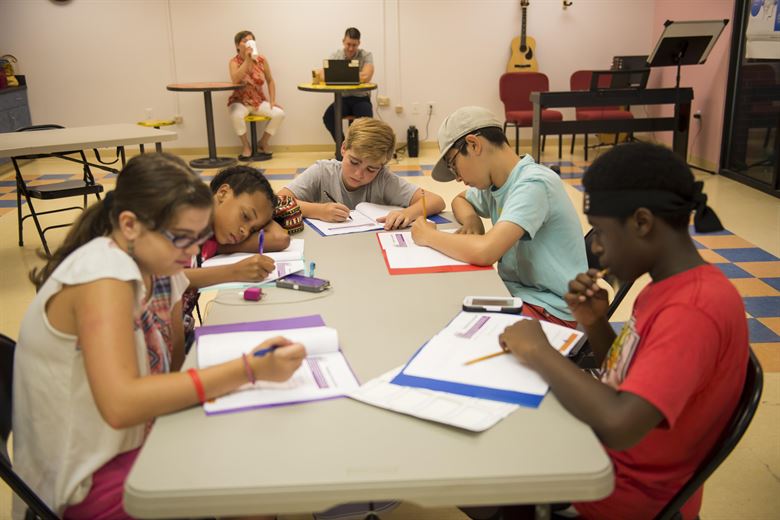
By: Nicolette G. Granata, Vanderbilt University
As the majority of those who work with children already know, bullying is a pervasive issue among youth today; around 20% of children ages 12-18 have experienced it per the 2017 School Crime Supplement (www.stopbullying.gov). Service providers (educators especially) play an extremely important role in preventing and addressing bullying. Studies have found significant correlations between teacher supervision, rule enforcement, and attitudes towards bullying and the prevalence of bullying in their classroom (“Why Should We Attempt to Prevent/Reduce Bullying,” The University of Colorado Boulder). As an educator, having a strong understanding of what research has found in regard to which of your students are most likely to bully versus be bullied will further your awareness and understanding of the student dynamics in your classroom and hence the possibility or presence of bullying within it.
So, what do we know about students who are likely to bully others? Research by The University of Colorado Boulder suggests that boys are more likely to engage in bullying behavior than girls, and that girls who do bully are less physically aggressive than boys that bully. Girls are often engaging in what is called “relational bullying” or “social bullying” (www.stopbullying.gov): bullying that has to do with “reputations” and “relationships” (e.g. spreading rumors about someone). Remember, bullying is characterized by three criteria: it is aggressive, it is carried out repeatedly and overtime, and there is an imbalance of power. By revisiting this criterion often, we can remind ourselves how different bullying today can look than bullying as portrayed by older movies and media (e.g. a bully knocking down a victim’s books in the hallway).
Individual risk factors that have been identified by research in students who bully are “impulsiveness,” “positive attitudes toward violence,” “aggression,” “difficulty conforming to rules/lack of coping skills,” and “decreasing interest in school” (“Why Should We Attempt to Prevent/Reduce Bullying,” The University of Colorado Boulder). Bullies are often at the center of social groups with a numerical advantage or popularity, which aids in the bullying behavior (Institute of Medicine and National Research Council of the National Academies, 2014). And while they may be underachievers academically, they often retain a positive self-image and high social status. The popular message that bullies bully because they “feel bad about themselves” or have anxiety or low confidence has been debunked by the majority of research testing that hypothesis (Lapidot-lefler & Dolev-cohen, 2015). Bullies are often well-liked, and by many differing groups within their social spheres.
For those of you working in early education, it’s worth noting that a number of studies investigating bullying from a developmental perspective have found important links between the presence or absence of certain skills/qualities in early childhood and the risk of antisocial behavior later in life. For example, a 2012 study by Keenan suggests that preschoolers who fail to develop age-appropriate strategies for regulating their own aggressive behavior are at high-risk of aggressive and antisocial behavior, such as bullying, later in life. Additionally, this work highlights how delays in language development early in life can actually serve as a mediator to the presence of aggression in later years by inhibiting opportunities for empathy/emotional development and socialization with peers early on. Further investigation has found language development to be both a predictor and consequence of aggression. So, if you are an early-childhood educator, these findings present additional motivation for spending time and resources teaching curriculum concentrated on language and socio-emotional development. If you are an elementary or secondary school educator, the implications of this work are also relevant to you. If able to do so, talk to a student’s past teachers about the student’s language and social skills in their respective classrooms. Acquiring this knowledge will just provide further context to the behaviors of students who you have noticed or identified as being at risk of bullying other students.
What do we know about students who are being bullied (the victims), then? Findings from a 1991 study by Olweus failed to support another commonly held belief that bullying victims have prominent physical attributes (e.g. short, tall, weak, overweight) that contribute to their victimization. The study did find, though, that these students often struggled to succeed at various sports or activities. Victims were also more likely to have low self-esteem, be of lower social status, and score poorly on intelligence tests. They had few friends, or no obvious friends at all (Lapidot-lefler & Dolev-cohen, 2015). So, as an educator, pay attention to which of your students seem to spend a great deal of their time alone at recess. Or, initiate conversations with other direct service providers such as your students’ bus drivers, librarians. etc. For example, talk to your physical education instructor(s) to find out which of your students are being excluded by their peers on the basis of their athletic abilities. This information can aid you in identifying which of your students are at risk of being bullied and taking action to create more inclusive and supportive environments before the bullying even begins.
When you consider the risk factors discussed above, it makes sense that marginalized groups such as students with disabilities or students that identify as LGBTQI+ would be at an even higher risk of victimization than their typical peers. Research has shown that bullies seek out victims who are “safe” targets: submissive, insecure, and anxious, or that they seek out “reactive” victims who resort to aggression in response to the bully but still fail in their attempts to overpower them (Juvonen & Graham, 2014). In an extensive literature review on the presence of bullying among students with disabilities, several studies have cited victimization rates over 50% for these students. Students with Autism Spectrum Disorder (ASD), in particular, may be at especially high-risk. Difficulties with communication and social interaction, “restricted interests” (e.g. the student only wants to talk about cars), and a tendency to produce strong behavioral and/or emotional reactions are all common pivots of ASD and parallel the qualities that a bully would seek out in a victim, as discussed above (Schroeder et al., 2014).
Despite all of this, research has strongly supported the point that having just one friend (or even just a neutral social interaction) that demonstrates support for a victim can significantly lower the risk of bullying – or, if bullying is already occurring, minimize its long-term impact on the victim’s psychological and emotional well-being (Institute of Medicine and National Research Council of the National Academies, 2014). So educators, once you have 1) identified those students at risk to bully in your classroom and 2) identified those at risk of being bullied in your classroom, consider 3) building a classroom climate of upstanders by teaching your students that they could be the one person it takes to change another student’s life the better.

Nicolette Grace Granata is a recent graduate of Vanderbilt University with a Bachelor of Science in Child Development and Psychology and a minor in Special Education. She is thrilled to be staying at Vanderbilt for five more years to pursue her Ph.D. in Psychological Sciences (Developmental Psychology) within Vanderbilt’s Peabody School of Education and Human Development. She will continue her undergraduate research investigating young children’s concepts of norms, morality, disability, and empathy from a developmental perspective in order to better foster meaningful social inclusion for individuals with disabilities and differences throughout the lifespan. Nicolette has also served as the Communications Coordinator for the International Bullying Prevention Association (IBPA) for over a year now.
